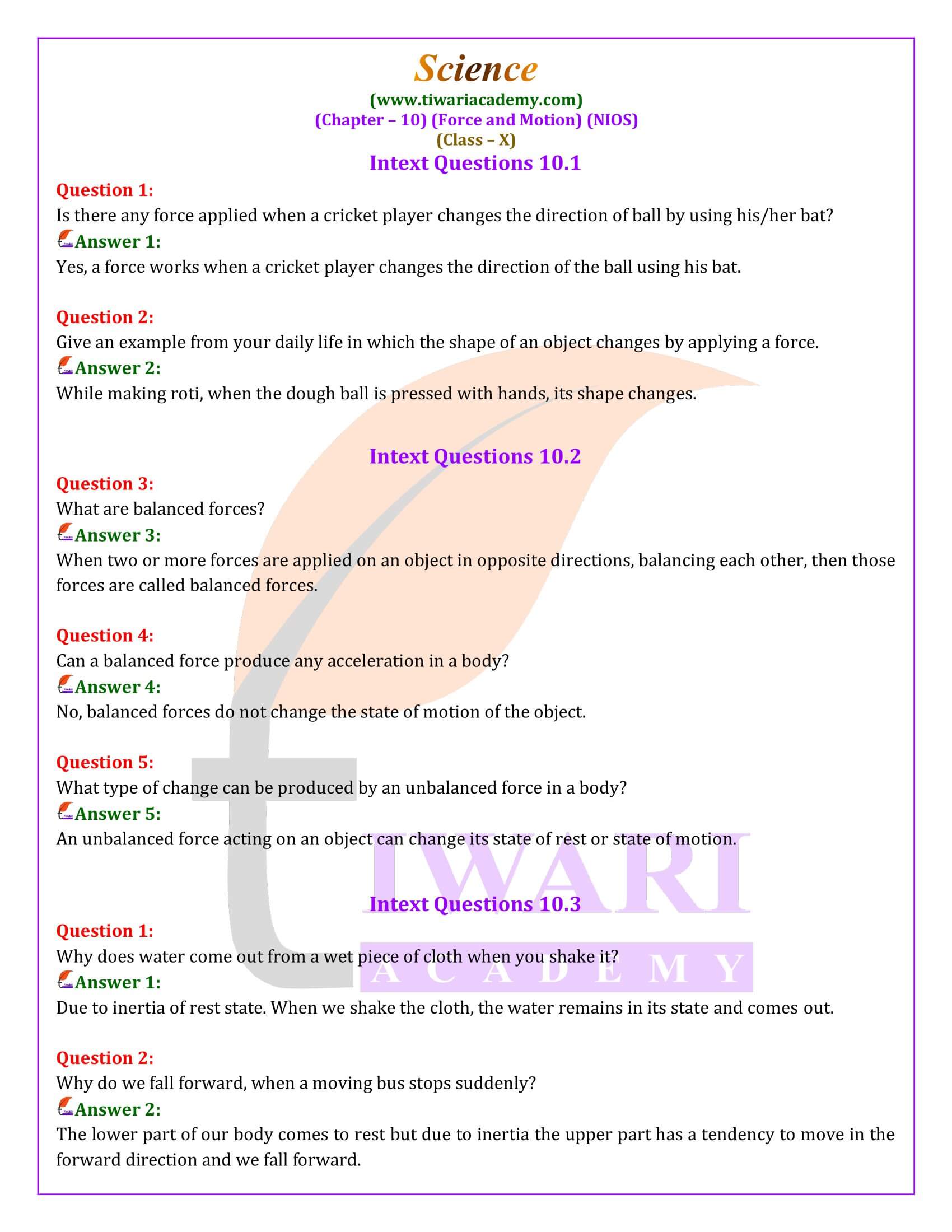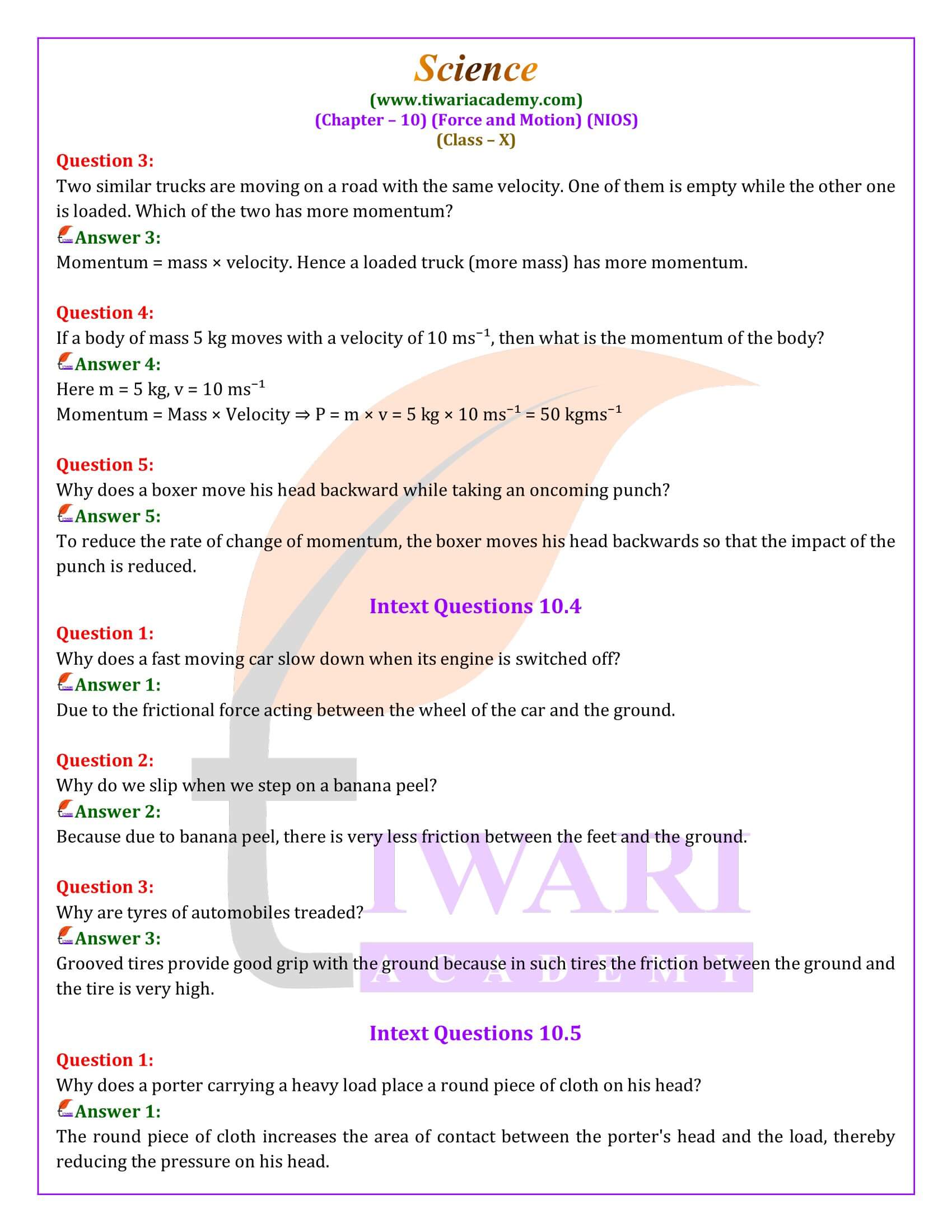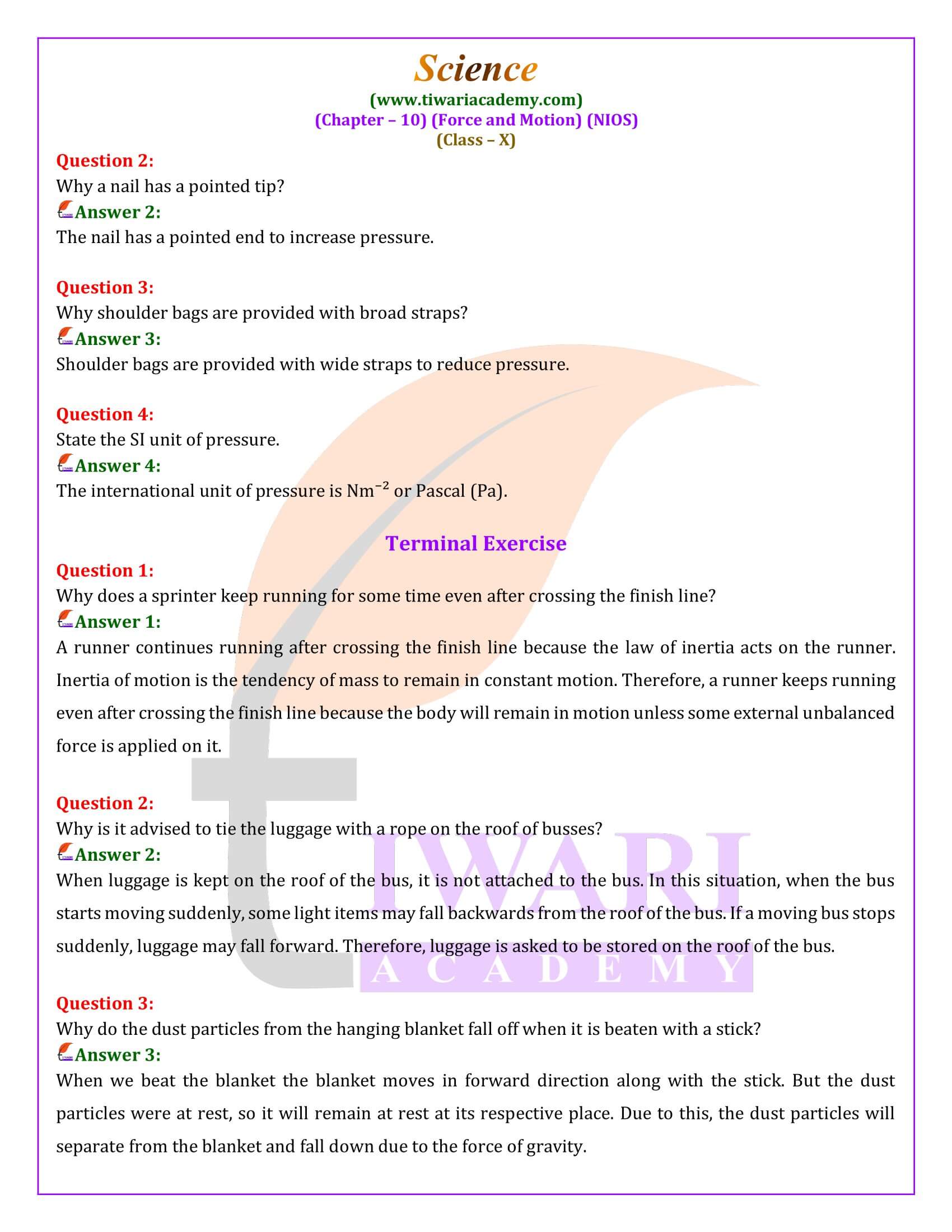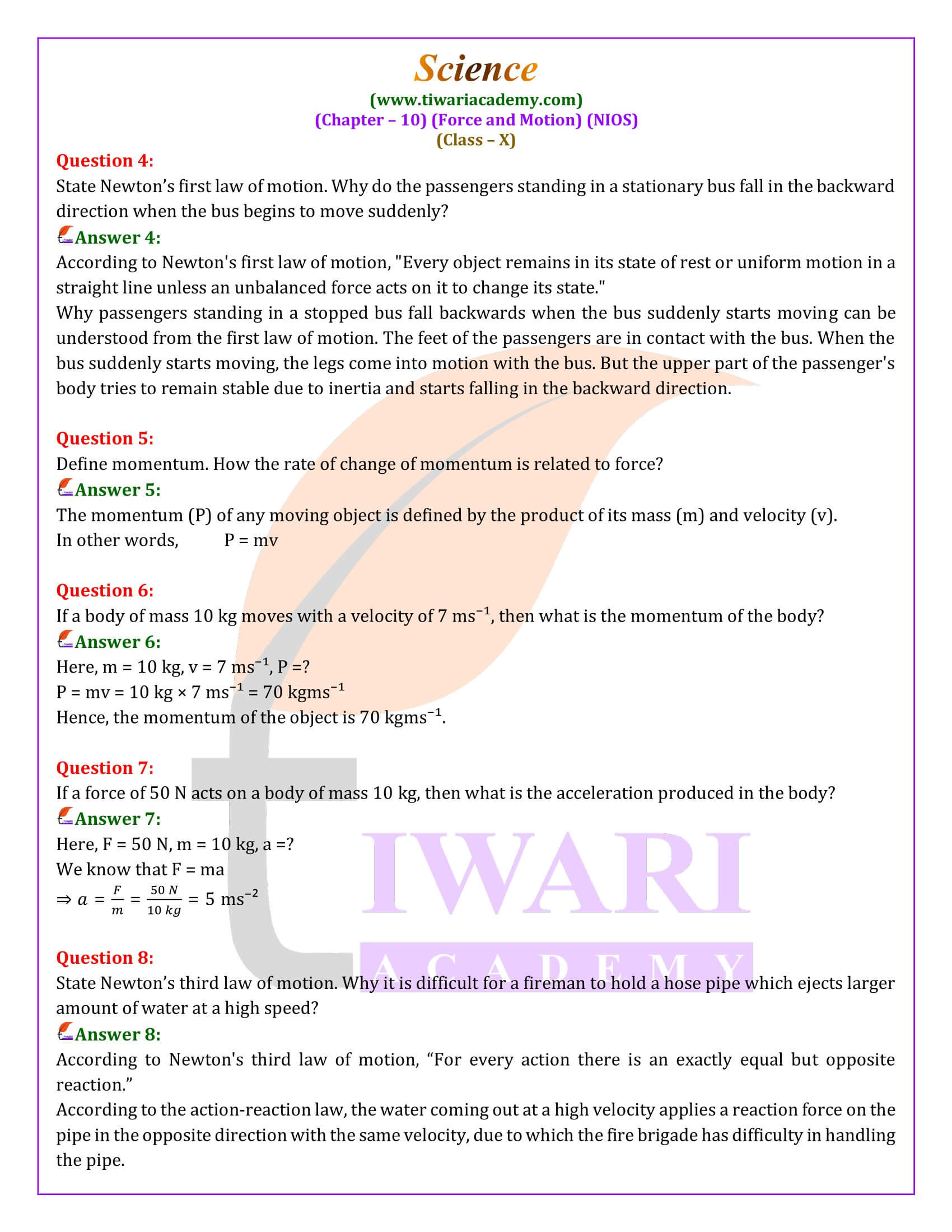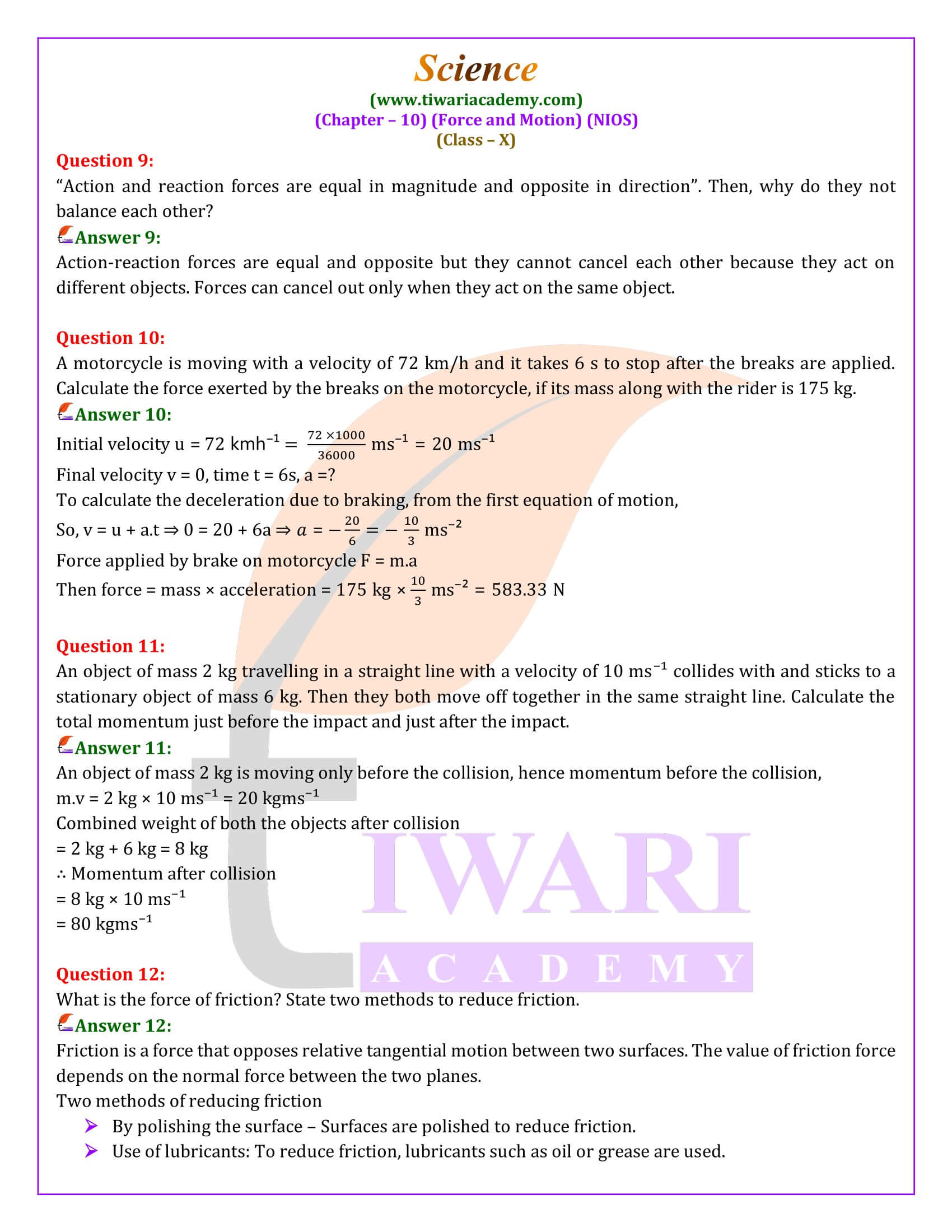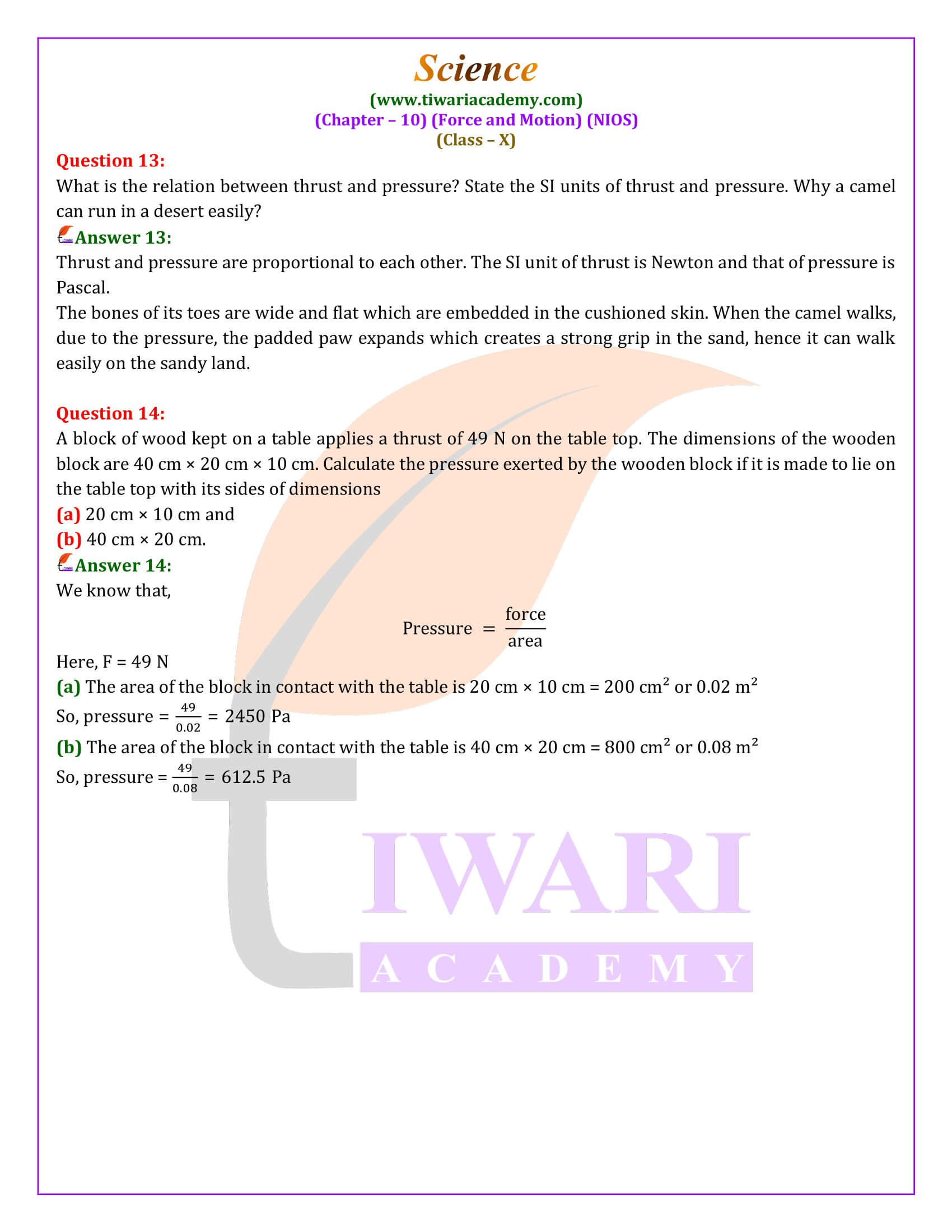NIOS Class 10 Science Chapter 10 Force and Motion Solutions in Hindi and English Medium revised and updated for academic session 2024-25. All the question answers of NIOS Class 10 Science chapter 10 are given here in easy to learn format.
Force and Motion: Unveiling the Dynamics of Movement
The exploration of force and motion offers a fascinating glimpse into the principles that govern how objects interact and move in our world. From the stillness of a resting object to the dynamic actions of pushing and pulling, the concepts of force, motion, and their underlying laws are fundamental to understanding the physical world around us.
The Essence of Force and Motion
At the heart of this exploration is the concept of force—a push or pull that can change an object’s speed, direction, or shape. Force is omnipresent in our daily experiences, whether through the simple act of kicking a ball, changing the direction of a moving object, or even altering the shape of an object, as illustrated by the compression of a balloon. These examples underscore the diverse effects of force, leading us to appreciate its role in initiating movement, modifying trajectories, and reshaping materials.
Balanced Forces and Their Unseen Impact
The distinction between balanced and unbalanced forces reveals the nuanced interactions that dictate motion. The imagery of a tug-of-war provides a relatable metaphor, illustrating how equal forces result in no movement, symbolizing balanced forces, while the dominance of one force over another initiates motion, highlighting the nature of unbalanced forces. This concept is further elucidated through experiments, such as pushing a brick in different directions, which intuitively demonstrates how forces influence motion and equilibrium.
The Laws of Motion: Newton’s Enduring Legacy
The discourse on force and motion is incomplete without discussing Sir Isaac Newton’s three laws of motion. These laws, which have stood the test of time, offer a comprehensive framework for understanding the intricacies of motion in the universe. The first law, known as the law of inertia, posits that objects maintain their state of rest or uniform motion unless acted upon by an unbalanced force. This principle finds application in everyday phenomena, from the jerk experienced in a bus to the detachment of dust from a carpet.
Newton’s second law introduces the concept of momentum and establishes the relationship between force, mass, and acceleration, providing a mathematical foundation to predict the effects of forces on motion. This law not only enhances our understanding of physical interactions but also offers practical insights, exemplified by the analysis of forces in sports and transportation.
The third law, emphasizing action and reaction, unveils the reciprocal nature of forces, illustrating that for every action, there is an equal and opposite reaction. This law is exemplified through diverse scenarios, from the recoil of a gun to the propulsion of rockets, underscoring the universality of Newton’s insights across different contexts.
Friction: The Dual-Edged Sword
The exploration extends to friction, a force that opposes motion, presenting both challenges and benefits. While friction is essential for tasks like walking or driving, it also introduces wear and tear on materials and reduces efficiency. The study of friction not only highlights its impact on motion but also encourages the pursuit of innovative solutions to mitigate its adverse effects, enhancing technological and engineering designs.
The Phenomena of Thrust and Pressure
The concepts of thrust and pressure are explored, illustrating how forces distributed over areas produce pressure. This discussion not only enriches our understanding of physical principles but also applies to practical scenarios, such as the design of cutting tools and the distribution of weight in architectural structures, showcasing the relevance of physics in real-world applications.
The journey through the concepts of force and motion culminates in a deeper appreciation of the physical laws that govern our universe. From the fundamental principles laid out by Newton to the intricate dynamics of friction, pressure, and thrust, this exploration offers invaluable insights into the forces that shape our interactions with the physical world. As we continue to uncover the mysteries of force and motion, we are reminded of the enduring legacy of physics in enhancing our understanding of the universe and improving the human condition through technological advancements.
